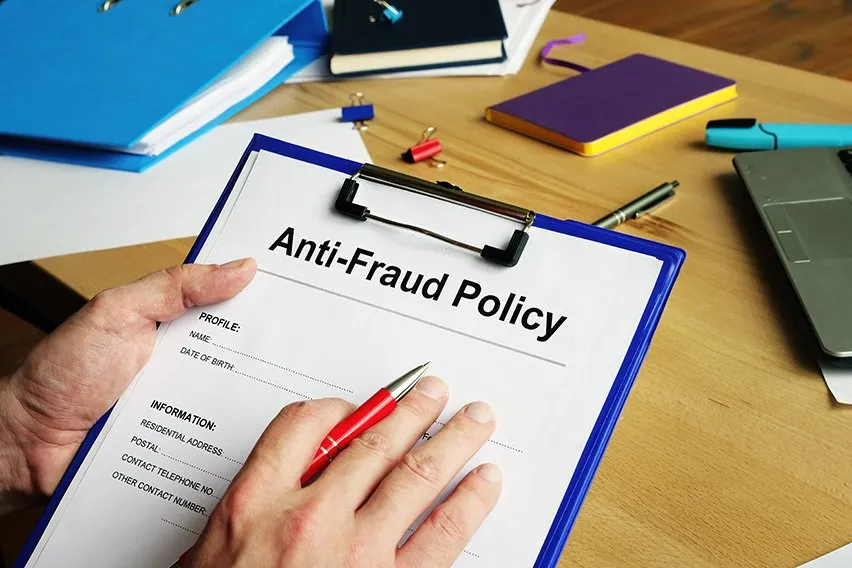Protect Your Business: 10 Types of Business Fraud to Look out For


According to the Association of Certified Fraud Examiners (ACFE), businesses lose around 5% of financial revenue due to fraudulent behavior. While that may sound like a relatively small amount, it definitely adds up! Experts estimate total annual loss around the world at a whopping $3.7 trillion, and this doesn’t even take into consideration the other costs of fraud like a negative reputation and company morale.
Recognizing what fraud looks like is the first step to protecting your business from it. Below are 10 of the most common types of fraud that business owners should check for.
10 Types of Fraudulent Schemes
1. Payroll Fraud
Payroll fraud can manifest in a variety of ways. An employee could lie about their productivity, sales or hours worked to get a higher pay. Some may request for a pay advance without any intention of paying it back. Others may even take it a step further by enlisting a co-worker to manipulate their attendance records by clocking in and out for them.
According to most studies, payroll fraud disproportionately affects small businesses because they are less likely to have anti-fraud measures and systems.
How to avoid it: Do background checks on every potential employee. Have managers closely monitor time sheets and use secure automated payroll services.

2. Asset Misappropriation/Skimming
Asset misappropriation is one of the most common types of business fraud, but it is also one of the easiest to spot. Watching out for forged checks, missing inventory and accounts that simply don’t add up is key to identifying asset misappropriation. You could also fall victim to skimming, which is the act of taking money from either a customer or the company without recording the transaction.
How to avoid it: Rotate cash-handling staff and do not entrust all financial tasks to one employee.
3. Invoice Fraud Schemes
This type of fraud happens when the fraudster (often an employee in sales or accounting) creates fake invoices to steal money from the business. This could mean invoicing for products and services that were never bought, creating a fake supplier/shell company to funnel the money to, or awarding over-inflated contracts to personal friends and family.
How to avoid it: Cross-check every invoice with actual goods and services purchased. Do comprehensive background checks before approving a new supplier.
4. Financial Statement Fraud
Financial statement fraud involves fudging important numbers like sales, revenues, assets and liabilities. Usually, this is done to dupe investors or the public, manipulate stock or increase bonuses. While this is one of the rarer kinds of business fraud, it is also one of the most damaging.
How to avoid it: Delegate different accounting functions to different employees. Closely examine financial statements for inconsistencies or inaccurate information before publishing.
5. Tax Fraud
Tax fraud (also known as tax evasion) is a type of fraud that happens when an individual or company’s earnings and expenses are misreported to the IRS, often to take advantage of lower tax brackets and special exemptions.
How to avoid it: Do not over-report expenses or under-report earnings. File your taxes completely, accurately and on time.
6. Data, Intellectual Property and Identity Theft
A lot of businesses handle sensitive information, whether personal data or intellectual property (IP). IP theft can damage your business if an employee leaks trade secrets and patents to your competitors. Identity theft can hurt your reputation due to lower customer trust.
How to avoid it: Restrict access to high-level documents. Have a security policy in place for the classification and handling of sensitive information.
7. Insurance and Banking Fraud
Most companies offer health insurance or workers’ compensation to their employees. Sadly, there are employees who try to profit off insurance by filing false claims or lying about injuries and illnesses, resulting in higher premiums and more out-of-pocket expenses for small business owners.
How to avoid it: Be strict about the requirements for filing insurance claims/workers’ compensation. Check all submitted documents to ensure they’re real.
8. Money Fraud
Money fraud is a type of fraud where a customer uses fake bills to make a real purchase. If you don’t check regularly, you won’t notice the notes are counterfeit until it’s too late.
How to avoid it: Train cash-handling employees on how to check for counterfeit bank notes. Invest in a counterfeit money detector if you handle large amounts of cash regularly.
9. Return Fraud
Many retail businesses have some sort of return, refund or exchange policy that allows customers to send back defective items. Some people take advantage of this by lying about purchases, returning stolen goods, stealing receipts, or using items and then returning them before the return period is up to get their money back.
How to avoid it: Require receipts for all returns and exchanges. In the case of refunds, give store credit instead of cash.

10. Bribery and Corruption
Bribery and corruption encompasses a variety of practices such as skimming/getting kickbacks from projects, using money to influence major company decisions, and manipulating contracts to favor some people over others.
How to avoid it: Implement stricter compliance programs and gifting guidelines. Conduct due diligence with all employees, management and third-party vendors.
Other Fraud Risk Protection Tips
- Make fraud reporting a part of your company culture. Encourage people to report red flags via a safe, anonymous anti-fraud hotline.
- Have specific and comprehensive anti-fraud, anti-bribery and anti-corruption company policies. Make sure your policies have teeth by implementing the policy and enforcing consequences when an employee violates the agreement.
- Do surprise audits and inspections regularly. Regular checkups can help you spot fraudulent behavior and mitigate the damage immediately.
Protect Your Business Against Fraud Schemes
No matter the niche or industry, all businesses are vulnerable to fraud if they don’t know how the different kinds of fraud manifest. Once you know what to look out for, you can start the all-important work of creating more effective security measures and mitigating fraud risk in your day-to-day operations.
RELATED ARTICLES

 Owner’s Draw vs. Salary: Paying Yourself as a Business Owner
Owner’s Draw vs. Salary: Paying Yourself as a Business Owner How to Avoid a Bad Hire: 5 Hiring Mistakes Identified
How to Avoid a Bad Hire: 5 Hiring Mistakes Identified How to Hire Good Employees in 8 Easy Steps
How to Hire Good Employees in 8 Easy Steps Boost Your Profits Without Increasing Sales: A How-To Guide
Boost Your Profits Without Increasing Sales: A How-To Guide 10 Leadership Skills for Business
10 Leadership Skills for Business How to Motivate Employees?
How to Motivate Employees?